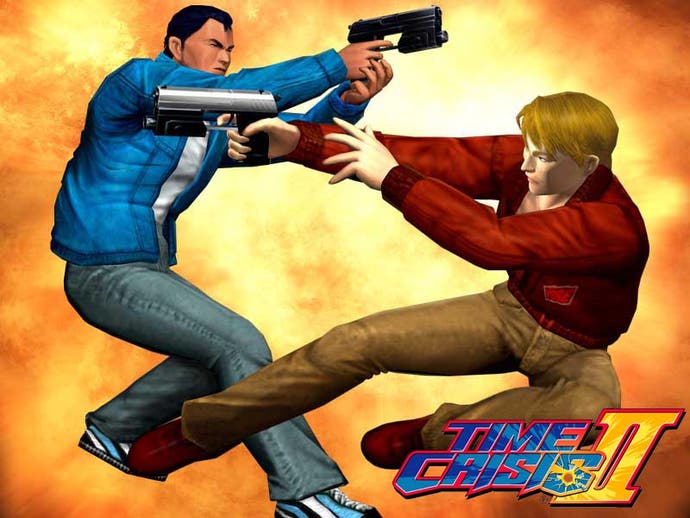Ellie Gibson on: Manual Stimulation
In praise of a dying format.
Is there such a thing as British industry any more? This important and difficult question is one I regularly find myself ignoring as I scroll through the headlines on the Guardian website, before clicking on a thing about tights. But I am vaguely aware we no longer mine coal or work steel or make cars, and that filthy foreign capitalists have ruined Easter by deciding Creme Eggs will now be made from glue and compost. What concerns me, though, is that I rarely see anything about the hidden threat to one of our greatest remaining homegrown industries: video game manual writing.
This is a subject close to my heart, because my first job in games was writing the manuals for first-party PlayStation games. I worked on a long list of titles between 2001 and 2002, typing the words "Press X to jump" approximately 897,643 times. I like to think that in my own way, I played a small role in the success of classics like C-12: Final Resistance, AirBlade, and my personal magnum opus, Alpine Racer 3.
(It was with this text I found my narrative voice, experimenting with new literary forms until I finally came up with: "To jump, press X." The shockwaves reverberated through the manual writing establishment for months. But then they started asking what I would do next - where could the form possibly go from here? I pushed it too far, I suppose, with "X press, to jump." The world wasn't ready.)
My favourite games to write manuals for were the ones Sony co-published with Namco. I would receive a hilariously translated version of the original Japanese manual, which I had to write up in slightly better English, then submit back to Namco for approval.
The translation for Time Crisis 2 came complete with profiles of the main characters, V.S.S.E. special agents Keith Martin and Robert Baxter. These listed interesting stats such as their weight, eye colour, and home town. I decided to use a bit of creative licence in localising the text for the UK market, pretty confident Namco weren't bothering to read the stuff I sent them anyway.

A few days later, the Sony product manager appeared at my desk with a printout of the manual. Attached was a note from the Namco exec. "Thanks for this," it read, "But where did your copywriter get the information that Robert Baxter is from Lewisham? Also, can we check the source for the thing about Keith Martin being in a Fleetwood Mac cover band. Thx."
It was about this time I realised I probably wasn't taking the whole thing seriously enough, and quit. But I've always maintained a weird affection for manuals, one that was established long before I started writing them.
Back when I was a child, you actually had to go to a shop to buy a video game, and then physically transport it home. What a thrill it was to get on the bus, open the box, and start reading the manual. What joy there was in scouring it during every school breaktime, counting down the hours till I could get home and boot up the game again. What secret pride I took in having read the thing from cover-to-cover, knowing I was fully primed for the challenge ahead. I didn't have a boyfriend till I was 18, by the way.
Nowadays, of course, it's all digital downloads and in-game tutorials. Where does this leave the manual writer? Or indeed, the next generation of gamers? What are they supposed to read when they're not playing games? What are they meant to do when they need to jot down an important thought about the video game they're playing, but find themselves without a manual containing two blank pages at the end headed "Notes"? What will they use for roaches?

The good news is that manuals may be making a comeback. One of my favourite games of last year was Keep Talking and Nobody Explodes. This multiplayer Steam title has a 23-page manual you have to print out yourself. One person is tasked with defusing a virtual bomb, while the other person, who can't see the screen, frantically skim reads the manual and calls out instructions: "Cut the blue wire," "Press the red button," "Stop being a dick," etc. Sometimes the game is incredibly tense, often it's totally hilarious. Just like real life bomb disposal, I expect.
The point is, this hip, modern, innovative game is unplayable without a manual. (Well, I say innovative. It has a LOT in common with a game my husband and I like to play called Build the Ikea Bookcase Without Questioning My Interpretation Of The Instructions And Nobody Gets Divorced.)
My hope is it will kick off a new trend, and that video games will be the Chuckle Brothers of 2016 - successfully making the transition in the public consciousness from unnecessary relics to notable and relevant cultural icons. Except without any shoulders that look like penises.

So here's to manuals. Let us not allow them to go the way of save points, blowing on cartridges, and Gex the Gecko. Let us demand more manuals, bigger manuals, manuals that come with manuals telling us how to use the manual. And let us spare a thought for all those who work so tirelessly to bring us our manuals, and risk their livelihoods by trying to squeeze in jokes about fictional mercenaries being able to do the John McVie bit from The Chain. I would have gotten away with it if it wasn't for that pesky head of third-party relations.

